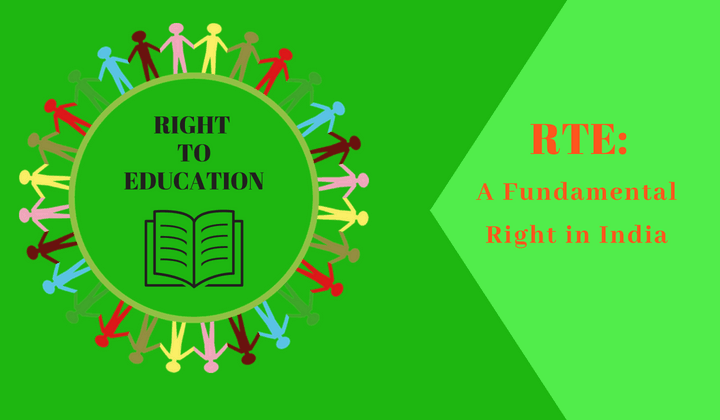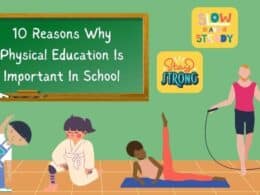Education is the place where learning begins but ends nowhere. It plays a pivotal role in moulding the overall Indian society. With this motive, on April 1, 2010, India adopted a landmark law that makes it compulsory for all girls and boys between the age of six and 14 years to get a free education.
Called the Right to Free and Compulsory Education to children or RTE, it forms part of The Constitution (Eighty-Sixth Amendment) Act 2009, inserted in Article 21 of Indian constitution.

Early Moves for Right to Education
Literacy rates could have been much lower than 12%, were it not for social reformers and Indian businessmen. These reformers made people realise the importance of education and how it impacts the overall development of the country.
They believed that people of the Indian subcontinent could rid shackles of oppressive British Raj by educating common people.
This saw the emergence of primary schools run by charitable organisations. However, efforts of social reformers and businessmen were limited for geographic and logistical reasons.
Education in India post – 1947
Not much activity occurred immediately after the formation of India on August 15, 1947. The newly born country witnessed several problem in education system including an influx of refugees from what are now parts of Pakistan, the first Indo-Pak war, uncertain economy and vacuum caused by the exit of British rulers.
However, Indian leaders of the years realised that education holds the key to the progress of the country. While they continued with education system imported by British colonials, the Indian government took solid steps towards the right to education.
Right to Education is a Reality
Right to education is made a reality by the father of the Constitution of India, Bharat Ratna Dr Bhimrao Ramji Ambedkar. Dr Ambedkar included explicit articles in the Indian Constitution that enshrine an individual right to education.
Hence, the Constitution of India guarantees Right to Education in various articles. It prohibits denial of education to any female or male on the basis of colour, race, ethnicity, place of origin, age, caste, creed or any other factor.
The Constitution of India also calls upon the government to enact laws and take steps to ensure education is available for all as a fundamental right.
After the formation of states, the responsibility of providing education for all was handed over to their governments.
Right to Education in India: 1950 to 2010
For nearly six decades, Right to Education in India was not very rigidly enforced. Consequently, families without many financial resources avoided admitting children to schools.
In fact, most impoverished families looked upon children as a source of income and made them work at construction sites, street-side eateries, factories and sweatshops.
Worse, more impoverished families sent children to beg or sold them off to human traffickers. The RTE +act is expected to reduce the incidence of parents keeping away their children from education.
Understanding Right to Education
The RTE Act has unique, groundbreaking features.
- That every child between the age of six and 14 years should have access to free education in India.
- The responsibility of providing free education rests with Central and state governments and administrations of Union Territories.
- At least 25 % seats at private schools are reserved for underprivileged children for free education.
- State governments and Union Territories administrations have to open adequate schools to provide free primary education.
- There is no upper cap on the number of children that a family can enrol for free education at schools under RTE.
Main Features of Right to Education (RTE) in India
Right to Education in India has won acclaim with the United Nations and foreign countries. This is because the Act contains several clauses that are introduced in the world.
- The term ‘free education’ covers all aspects of a student. This means students and their parents will not be charged admission and other fees at schools. Additionally, students are entitled to free transportation between home and school, free text and notebooks, school bags and stationery as well as free mid-day meals. School uniforms are also given free, but this scheme is under various stages of development in some states due to logistical reasons.
- Students are admitted to classes that match their age. This means a child of eight years can directly join a higher standard class. However, admission to the senior class will depend upon the skills of the student. Alternatively, they can enter a lower grade.
- There are no compulsions for a student to continue education after the age of 14 years.
- Students have the right to get a free elementary education even after crossing the age of 14 years.
- The cost of free education will be shared between the Central and state government/ Union Territory Administrations.
- Schools have to ensure that ideal student-teacher ratio is maintained and adequate attention is given to every child.
- There will be no discrimination on any basis for students to get a free education under RTE.
- No child shall be denied admission to a school due to lack of a birth certificate or any document.
- Every student who completes elementary education under RTE will be awarded a certificate by the school and government.
- No child enrolled under RTE will be expelled from school. (Unless mandated by appropriate laws and court.)
- State governments and schools have to ensure that teachers have adequate qualifications and skills.
- A grant of Rs.10,000 per year will be given to families to educate severely disabled children.
- Special arrangements are made to educate children with special needs.
Aims and Objectives of the RTE Act in India
Dismal literacy rates in India is the main reason for the RTE Act to be implemented. Its objectives therefore are
- To eliminate illiteracy from India.
- Provide equal opportunities for higher education.
- Bring education within reach of weaker sections of the Indian society.
- Ensure children afflicted with severe disabilities and those with special needs are educated.
- Aims at increasing literacy levels among women.
- Provide sufficient education to earn a livelihood.
Education in India has undergone several upheavals. Ancient Indians laid a high emphasis on education. Consequently, there were several ‘gurukuls’ or organised schools run by scholars.
Generally, male children attended ‘gurukuls’ while girls received basic education at home from parents. The system suffered heavily during invasions of the Indian subcontinent.
Eventually, British occupation of the Indian subcontinent saw ‘gurukuls’ becoming extinct.
British colonials replaced ancient Indian education system with what we now call as the modern education system. It began as schools opened by missionaries.
British colonials started opening schools and institutes of higher education with a single objective: providing a workforce for administrating the subcontinent.
While British rulers deserve credit for sowing seeds of today’s education system eradicating ‘gurukuls’ caused massive illiteracy in India. This is evident from the fact that in 1947 when the country India was carved from the Indian subcontinent, literacy rate stood at a pathetic 12 %.
Challenges to Right to Education
There are several challenges to the implementation of RTE in India.
- There are no penalties for parents that refuse to send children to school.
- Shortage of qualified and skilled teachers in some Indian states.
- Inadequate classrooms for students with special needs.
- General gender bias causing families to send only male children for studies.
- Seasonal labour movement causing children enrolled at schools to travel with parents for work.
- Need for better infrastructure such as classrooms, schools and toilets for students.
- Monitoring nutritional quality of midday meals served at schools.
- Ensuring high-quality education for students with special needs.
- Fortunately, the bill designates National Committee for Protection of Child Rights and state bodies to ensure that the law is implemented seamlessly and every child benefits from RTE.
Also Read: The Rising Child Labour In India
Quota for Poor
A particular clause of RTE ensures that 25% seats at private schools are reserved for free students. The law also bans schools from levying a capitation fee on students.
Those found violating this clause are liable to face stiff penalties, including fines up to 10 times of the amount of money charged as capitation fee.
A flipside here is, children from needy families can get discriminated by wealthier classmates studying at private schools. While teachers and schools can be penalised for discrimination of any sort, there is no system to monitor similar actions by wealthy students.
Education in Tribal Belts
Educating children in tribal belts of India remains a massive challenge. This is due to the lack of infrastructure such as schools in the area and finding educated members of various tribes to serve as teachers.
There are also logistical issues such as opening schools that are accessible by students from tribal belts, due to remote locations.
Beti Bachao, Beti Padhao
The Beti Bachao, Beti Padhao (Save daughters, educate daughters) is an integral part of RTE. It was launched with two objectives: to prevent female foeticide and to get parents to send their girl children to school under RTE.
It also provides incentives to parents that send their girl children to study.
In Conclusion
India’s RTE Act is indeed unique. It covers a size of population unsurpassed in the history of the world. Though sufficient strides have been taken to provide education for all, some grey areas persist due to geographical features of the country.
Traditional taboo over educating girls also impedes progress. However, Right to Education will ensure India attains almost 100 % literacy rates within a few years. Be Educated..be Empowered!








